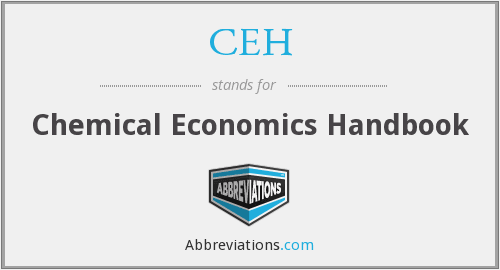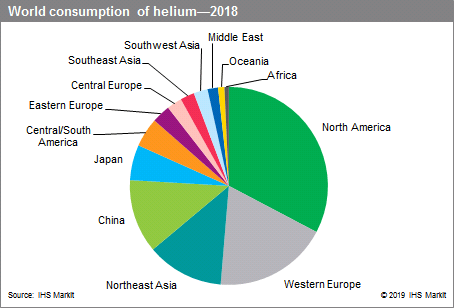دانلود گزارش Helium 2019 از Chemical Economics Handbook

خرید گزارش Helium 2019
برای دانلود فایل Helium 2019 مربوط به Chemical Economics Handbook و دریافت پی دی اف بررسی اجمالی صنعت پتروشیمی بر روی کلید خرید در انتهای صفحه کلیک کنید. پس از اتصال به درگاه پرداخت و تکمیل مراحل خرید، لینک دانلود ایمیل می شود. این گزارش مربوط به سال 2019 و در فرمت PDF ارسال می شود.
در صورتی که نیاز به دانلود هر گزارشی از IHS و یا PEP دارید، فقط کافیست ادرس اینترنتی گزارش را از سایت ihsmarkit.com و یا https://global.ihs.com برای ما ارسال کنید (راههای ارتباطی در صفحه تماس با گیگاپیپر ). پس از بررسی، هزینه ان اعلام می شود. پس از واریز نسخه الکترونیکی ارسال می شود.

Petrochemical Industry Overview
Chemical Economics Handbook
15 August 2019
لینک گزارش از Chemical Economics Handbook:
https://ihsmarkit.com/products/helium-chemical-economics-handbook.html
For Download Please Contact Us :
Price : 125$
دانلود رایگان گزارش Helium 2019
برای اطمینان از کیفیت گزارش Helium 2019 ، چند صفحه ابتدایی ان بصورت رایگان قرار داده شده است.گزارشهای دیگر دانلودی از ihsmarkit.com به همین صورت هستند.
درباره گزارش Helium 2019
The global helium market suffered under massive supply constraints during 2011–13, which caused severe shortages and greatly reduced demand as consumers started to either substitute or recycle helium. The situation improved toward the end of 2013, when the Qatar Helium II (RLH2) project came onstream midyear, but swung quickly into oversupply with additional capacity from the expansions in Algeria and the United States at the end of 2013 and in 2014. This oversupply continued through 2016 as a result of the start-up of several helium capacity expansion projects. In the beginning of 2017, a slight supply surplus remained from the large RLH2 plant that had finally reached full production in 2015. However, throughout 2018, helium was in tight supply caused primarily by the reduction of US helium production that started with the Qatar embargo in June 2017.
Because of the short supply in 2018, major helium suppliers were allocating all supply to historical helium consumption to prevent panic shopping and stockpiling. However, large projects announced in Qatar and Russia should secure the helium supply during the forecast period.
The following pie chart shows world consumption of helium:
Helium is an inert gas and the lightest of all gases except hydrogen. Helium is produced in the natural environment continually by the radioactive decay of uranium and escapes into the atmosphere. Since the concentration of helium in air is very minimal, extraction of helium from air is not economically viable. Helium is typically extracted from heliumbearing natural gas. It is also extracted from the vent gases from some liquefied natural gas (LNG) processing plants. Five fields alone supply about 80% of the world’s helium. Production outages or slowdowns from one of these five fields will have a severe impact on the global helium supply, making the helium supply chain sensitive to shock. The United States is still the major producer, but most new sources are developing elsewhere. The bulk of US production is related to the BLM (Bureau of Land Management), which manages the world’s largest helium reserve. In recent years, BLM-related production has diminished considerably. Helium is a global product in tight supply and any disruptions create shortages and dislocation.
Growth in the global demand for helium is driven by rising demand for magnetic resonance imaging (MRI), along with growth in the electronics, semiconductor, LCD, and fiber optic industries, which are centered in China, India, South Korea, Taiwan, and the Middle East. Up to 20% of global helium demand is estimated to come from the manufacture and operation of MRI scanners alone.
In 2018, an estimated 25% of global helium was consumed in liquid form, with this share being higher in developed regions. In the major consuming regions—the United States, Western Europe, Japan, China, and Other Asia—MRI was the largest application for liquid helium, followed by fiber optics, semiconductors/electronics, and metals processing (welding cover gas).
One of the largest uses for gaseous helium is in welding, where it provides an inert gas shield to protect the weld zone from the atmosphere. The two major welding processes that use helium are gas tungsten arc welding (GTAW) and gas metal arc welding (GMAW).
The semiconductor and electronics industry is a significant consumer of helium. Demand growth has been driven mainly by the emergence of larger-diameter silicon wafers. As the electronics industry is now preparing for the 450-millimeterdiameter wafer, it is expected that the electronics industry will use considerably more helium to satisfy its cooling needs
The future growth of helium is expected to be driven by demand from electronics manufacturers in Asia. Semiconductor manufacturing, flat-panel display manufacturing, and optical fiber manufacturing are all significant consumers of helium in Asian markets.
دانلود گزارش بررسی اجمالی صنعت پتروشیمی
بازار جهانی هلیوم در طی سالهای 1390-1390 تحت محدودیت های گسترده ای در عرضه قرار گرفت ، که این امر باعث کمبود شدید و تقاضای زیادی شد زیرا مصرف کنندگان شروع به جایگزینی یا بازیافت هلیوم کردند. اواخر سال 2013 ، زمانی که پروژه Qatar Helium II (RLH2) در اواسط سال قرار گرفت ، اوضاع بهتر شد ، اما در اواخر سال 2013 و در سال 2014 با ظرفیت اضافی از گسترش در الجزایر و ایالات متحده ، به سرعت به سمت مازاد عرضه سوق یافت. تا سال 2016 در نتیجه شروع چندین پروژه توسعه ظرفیت هلیوم ادامه یافت. در ابتدای سال 2017 ، مقدار کمی مازاد عرضه از کارخانه بزرگ RLH2 باقی مانده بود که سرانجام در سال 2015 به تولید کامل رسیده بود. با این حال ، در طول سال 2018 ، هلیوم در عرضه کم بود که عمدتا ناشی از کاهش تولید هلیوم ایالات متحده بود که با تحریم قطر آغاز شد. در ژوئن 2017.
به دلیل کمبود عرضه در سال 2018 ، تأمین کنندگان عمده هلیوم برای جلوگیری از خرید وحشت و ذخیره سهام ، همه تأمین ها را به مصرف تاریخی هلیوم اختصاص می دادند. با این حال ، پروژه های بزرگ اعلام شده در قطر و روسیه باید تأمین هلیوم را در دوره پیش بینی تأمین کنند.
نمودار پای زیر مصرف جهانی هلیوم را نشان می دهد:
هلیم یک گاز بی اثر و سبک ترین گاز از همه است به جز هیدروژن. هلیوم به طور مداوم در اثر پوسیدگی رادیواکتیو اورانیوم در محیط طبیعی تولید می شود و به جو فرار می کند. از آنجا که غلظت هلیوم در هوا بسیار کم است ، استخراج هلیوم از هوا از نظر اقتصادی مقرون به صرفه نیست. هلیوم به طور معمول از گاز طبیعی هلیوم دار استخراج می شود. این ماده همچنین از گازهای منفذ برخی کارخانه های فرآوری گاز طبیعی مایع (LNG) استخراج می شود. پنج میدان به تنهایی حدود 80٪ هلیوم جهان را تأمین می کنند. قطعی یا کندی تولید از یکی از این پنج زمینه تأثیر شدیدی بر تأمین جهانی هلیوم خواهد داشت و زنجیره تأمین هلیوم را به شوک حساس می کند. ایالات متحده هنوز تولید کننده اصلی است ، اما اکثر منابع جدید در جاهای دیگر در حال توسعه هستند. عمده تولیدات ایالات متحده مربوط به BLM (دفتر مدیریت سرزمین) است که بزرگترین ذخیره هلیوم جهان را مدیریت می کند. در سالهای اخیر ، تولید مربوط به BLM بطور قابل توجهی کاهش یافته است. هلیوم یک محصول جهانی در عرضه محدود است و هر گونه اختلال باعث کمبود و دررفتگی می شود.
رشد تقاضای جهانی برای هلیوم ناشی از افزایش تقاضا برای تصویربرداری تشدید مغناطیسی (MRI) ، همراه با رشد در صنایع الکترونیک ، نیمه هادی ، LCD و فیبر نوری است که مرکز آن چین ، هند ، کره جنوبی ، تایوان و خاورمیانه. تخمین زده می شود که حداکثر 20٪ از تقاضای جهانی هلیوم فقط از ساخت و کار اسکنرهای MRI حاصل شود.
در سال 2018 ، تخمین زده می شود که 25٪ هلیوم جهانی به صورت مایع مصرف شود ، این سهم در مناطق پیشرفته بیشتر است. در مناطق عمده مصرف کننده – ایالات متحده ، اروپای غربی ، ژاپن ، چین و سایر آسیا – MRI بزرگترین کاربرد برای هلیوم مایع بود و پس از آن فیبرهای نوری ، نیمه هادی ها / الکترونیک و پردازش فلزات (گاز پوشش جوشکاری).
یکی از بزرگترین موارد استفاده برای هلیوم گازی جوشکاری است ، جایی که یک محافظ گاز بی اثر برای محافظت از منطقه جوش در برابر جو فراهم می کند. دو فرآیند اصلی جوشکاری که از هلیوم استفاده می کنند عبارتند از جوشکاری قوس تنگستن گاز (GTAW) و جوشکاری قوس فلز گاز (GMAW).
صنعت نیمه هادی و الکترونیک مصرف کننده قابل توجهی از هلیوم است. رشد تقاضا عمدتا به دلیل ظهور ویفرهای سیلیکونی با قطر بزرگتر انجام شده است. از آنجا که صنعت الکترونیک اکنون در حال آماده سازی ویفر 450 میلی متری قطر است ، انتظار می رود که صنعت الکترونیک به طور قابل توجهی از هلیوم بیشتری برای تأمین نیازهای خنک کننده خود استفاده کند
انتظار می رود رشد آتی هلیوم به تقاضای تولیدکنندگان الکترونیک در آسیا منجر شود. ساخت نیمه هادی ، تولید صفحه تخت و تولید فیبر نوری همگی از مصرف کنندگان قابل توجه هلیوم در بازارهای آسیا هستند.
Download Helium 2019
Executive summary7